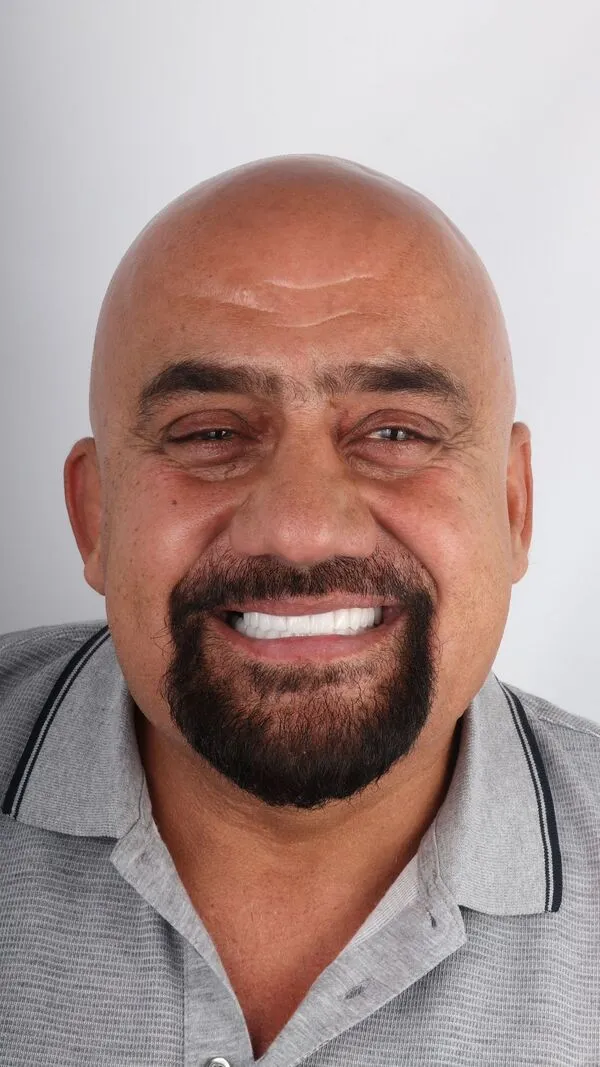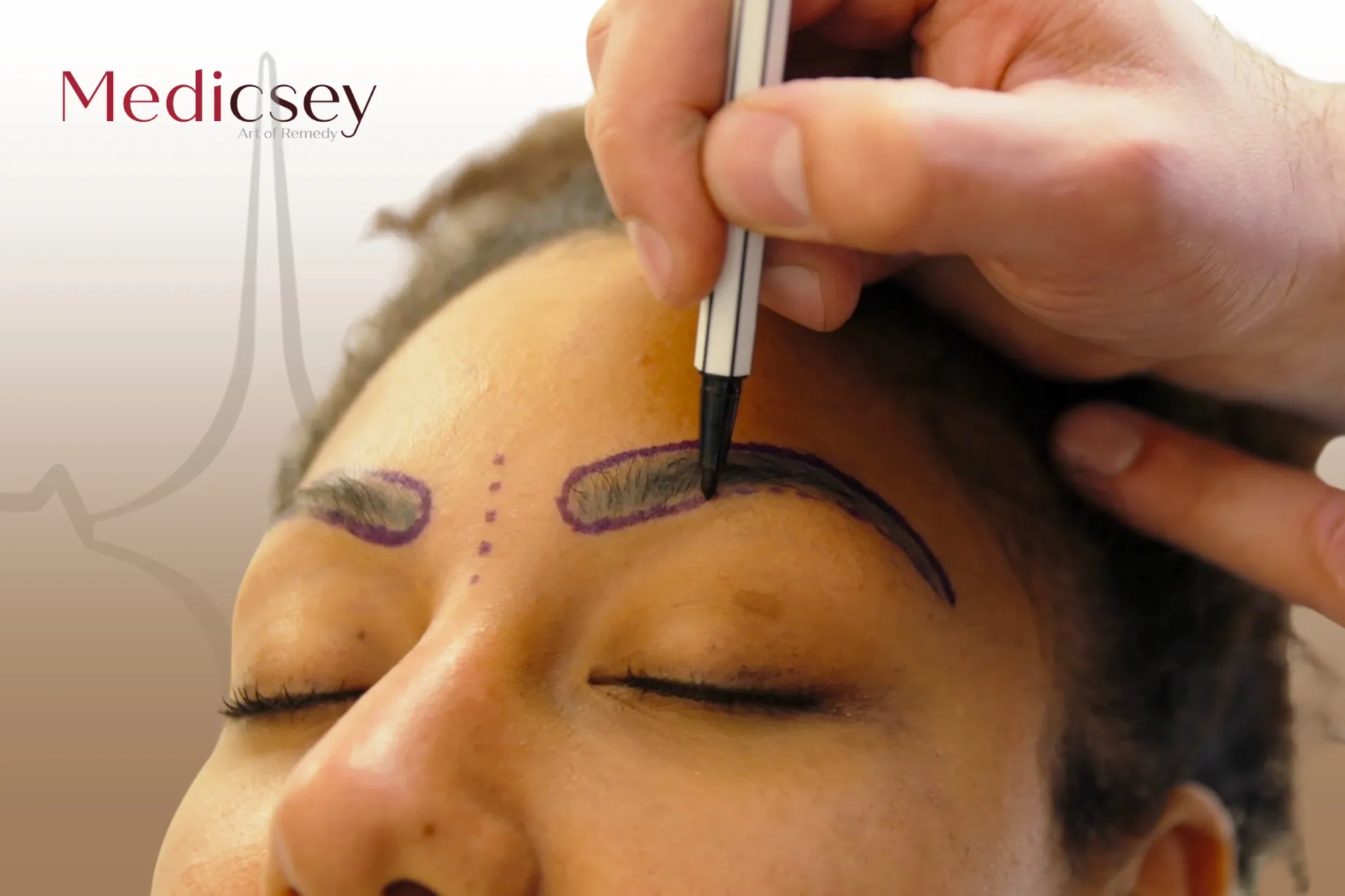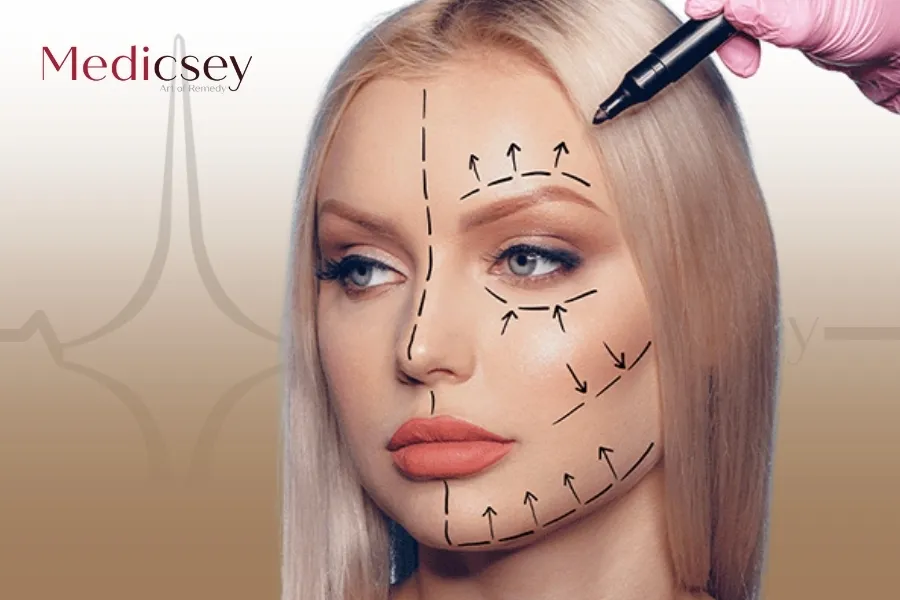Table of Contents
- Comparison of eyebrow and scalp characteristics
- Eyebrow transplant technique in Syria
- Eyebrow transplant side effects
- Eyebrow transplant cost
- Frequently Asked Questions
- What are the results of hair transplantation after 6 months?
- Does the transplanted hair fall out after six months?
- When does transplanted hair become thick?
- How do I know that the hair transplant was successful?
Eyebrows are a fundamental feature of the face and its expression. In many ways, eyebrows are as important as scalp hair in the appearance of the face, given their location at the center and frame of the eye. Unlike scalp hair loss, eyebrow loss is not a natural process, so it is difficult to live with a lack of eyebrow hair or its absence, not to mention that it attracts attention.
Eyebrow hair may be absent for several reasons, including thyroid disease and other systemic diseases, alopecia, burns, tattoos, infections, repeated hair removal, congenital absence of eyebrows, and their tendency to thin or shrink over time.
Eyebrow transplant in Syria is a microscopic grafting technique that aims to fill in the hair loss in the brow arch. This procedure aims to thicken and reshape the eyebrows, restoring their curvature. Because eyebrows have unique characteristics, eyebrow transplantation differs from hair transplantation in several important points, which we will discuss in turn in our article.
Comparison of eyebrow and scalp characteristics
One of the most notable features of eyebrow hair is its brief growth period. It means that eyebrow hair is in the growth stage (anagen phase) only for 4 months before going into the resting stage (telogen phase) and then it falls out. In contrast, the growth phase of scalp hair can last from 3 to 7 years, thus, the hair on the head is able to grow for a much longer time.
However, the change in the direction of the eyebrow hair is drastic at different parts of the brow: in the part closest to the nose the hair is directed upwards, in the upper part of the eyebrow it is directed outwards and downwards while in the lower part the direction is outwards and upwards. This pattern of hair running in different directions makes the hairs to be joined in the middle of the eyebrow thus, a natural height which extends horizontally along each eyebrow is formed.
The second distinguishing feature to consider when performing Eyebrow transplant in Syria is that it emerges from the follicles at a very sharp angle, extending along the skin's surface as it grows. By comparison, hairs emerge from the scalp at an angle of up to 45 degrees. The third important feature of eyebrow hair is that it grows singly, rather than in clusters of one to four hairs, like the follicular units on the scalp.
Eyebrow transplant technique in Syria
The most important thing to do for a successful eyebrow transplant is to follow the natural direction of the hair precisely. The sharp angle of hair growth must be taken into account to restore the original appearance of the eyebrows and the direction of convergence of hair along their length. Most importantly, holes must be made in the skin to insert the eyebrow hairs using a very thin tool that slides under the skin surface to ensure that the hair remains horizontal above the skin surface as it grows.
Another important aspect of Eyebrow transplant in Syria is the ability to use only individual hair follicles. Because the scalp contains follicular units containing 1 to 4 hairs, these follicles may need to be divided into individual follicles under a microscope. Technically, eyebrow transplantation is considered an advanced form of microsurgical transplantation rather than a transplant.
Identifying the exact position of each hair and determining the exact locations for transplantation in the eyebrows requires great skill and experience from the surgeon. Furthermore, when the patient has wavy or curly hair, it is important to turn the hair so that the curvature of the hair shaft follows the natural curve of the eyebrow. Exactly what kind of information you will get, our beloved readers, is from the best surgeons at MedX Hair Clinic that we have re-written in order to help you be safe and have a good look because these are our problems of the highest concern.
Generally, hair transplantation is picking hairs and then implanting them in the same scalp but for eyebrow transplantation the hair does not come from the eyebrows re-vegetation so the hair used may be from one to several colors and in addition to a different growth rate. However, the hair that is in the transplant takes over the characteristics of the area gradually. The state of the eyebrows will be changed within the next twelve months, and in this time, the eyebrows can be groomed and adjusted to your liking.
Steps for Eyebrow transplant in Syria, Medicsy Clinic
At our clinic, we offer you a comprehensive and professional experience to restore your eyebrows to natural density and perfect symmetry. Here is a comprehensive overview of the steps of the procedure:
- Initial medical consultation:
Your journey begins with a comprehensive assessment session with our medical team, where we discuss your aesthetic aspirations and review your hair loss history. Our specialist surgeon will carefully analyze your eyebrows and potential donor areas, taking into account hair texture and growth direction to design a customized transplant plan.
- Safe local anesthesia:
We use local anesthetic to ensure your complete comfort during the procedure, ensuring a pain-free experience from start to finish.
- FUE hair follicle extraction:
Hair follicles are extracted one by one from the back or sides of the scalp, where the hair resembles eyebrow hair. We use a specialized Micro Punch tool that allows the follicles to be removed with high precision, minimizing tissue damage and enhancing natural results.
- Fine sorting of follicular units:
After extraction, the medical team carefully sorts each follicle according to the number and thickness of hairs, allowing them to be strategically implanted to suit the eyebrow needs.
- DHI hair transplantation:
The selected follicles are implanted one by one directly into the eyebrow area without the need for prior incisions, adhering strictly to the natural growth direction of the hair. This technique ensures perfect integration between the transplanted hair and the original eyebrows.
- Post-transplant care:
We provide detailed instructions and ongoing support after the procedure to ensure proper recovery and achieve the best possible results in terms of density and shape.
It's time for a change, ladies and gentlemen!
Restore the beauty of your eyebrows in a natural and safe way. Book your consultation today with Medicsey and enjoy special prices and first-class service.
Eyebrow transplant side effects
Unlike many cosmetic procedures, eyebrow transplant side effects are extremely rare and only occur if post-operative care is neglected in Syria. Therefore, we recommend that you, dear reader, follow the following:
- Avoid touching your eyebrow for 48 hours.
- Use medications prescribed by your doctor to prevent infection.
- Avoid strenuous activities or direct sun exposure.
- Commitment to follow-up sessions.
If you follow these instructions, eyebrow transplantation will eliminate the need for constant tattooing or regular visits to a makeup artist to have your eyebrows drawn.
Eyebrow transplant cost
|
The process |
Cost in Syria |
|
Eyebrow transplant cost in Medicsey |
$1000 USD regardless of the number of grafts transplanted. |
The price of Eyebrow transplant in Syria is very reasonable when compared to other countries that perform hair transplantation.
Frequently Asked Questions
What are the results of hair transplantation after 6 months?
After 6 months of hair transplantation, the transplanted hair has given reasonable density to the transplanted area, as it begins to grow two months after the transplantation and continues to give density for up to 6 months, giving the final density after a year.
Does the transplanted hair fall out after six months?
Of course not. After a hair transplant, the transplanted area is exposed to what is called shock hair loss, which is a normal occurrence that occurs within two weeks of the transplant. The transplanted follicles return to producing hair within two months, and the hair continues to grow and thicken until the sixth month, and is completed within 12 months.
When does transplanted hair become thick?
The transplanted hair becomes thicker in two stages: it begins to gain density within 6-7 months of the transplant and continues to become thicker for up to a year.
How do I know that the hair transplant was successful?
We know that hair transplantation is successful simply by increasing hair growth. You will experience a shock of hair loss in the first two weeks after the transplant, but your hair will begin to grow and thicken within two months. If this does not happen, you need to consult your doctor to assess your condition.
At the end of our article on eyebrow transplants in Syria, we hope we've provided a comprehensive overview of this revolutionary procedure. Get ready to ditch all cosmetics, including painful tattoos, and achieve perfect eyebrows for life with Medicsey. Contact us now via WhatsApp
Read more: Best hair transplant technique
The Golden Guide: How to Find the Best Hair Transplant Clinic in Syria









.webp)


.webp)


.webp)